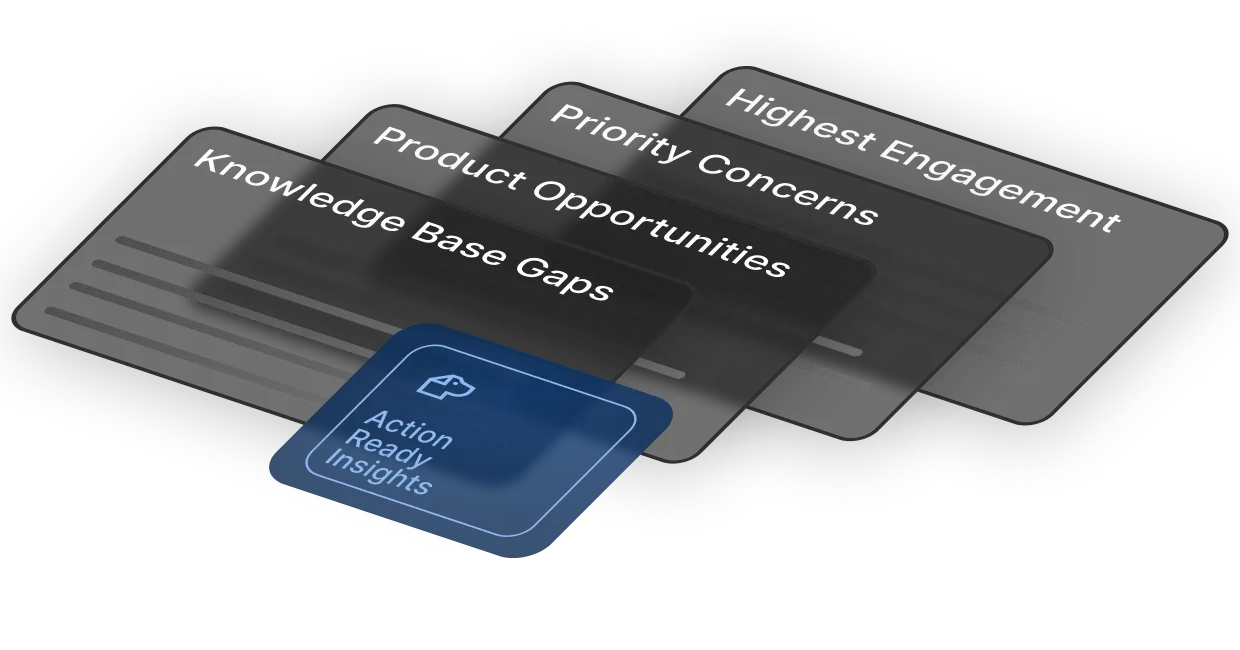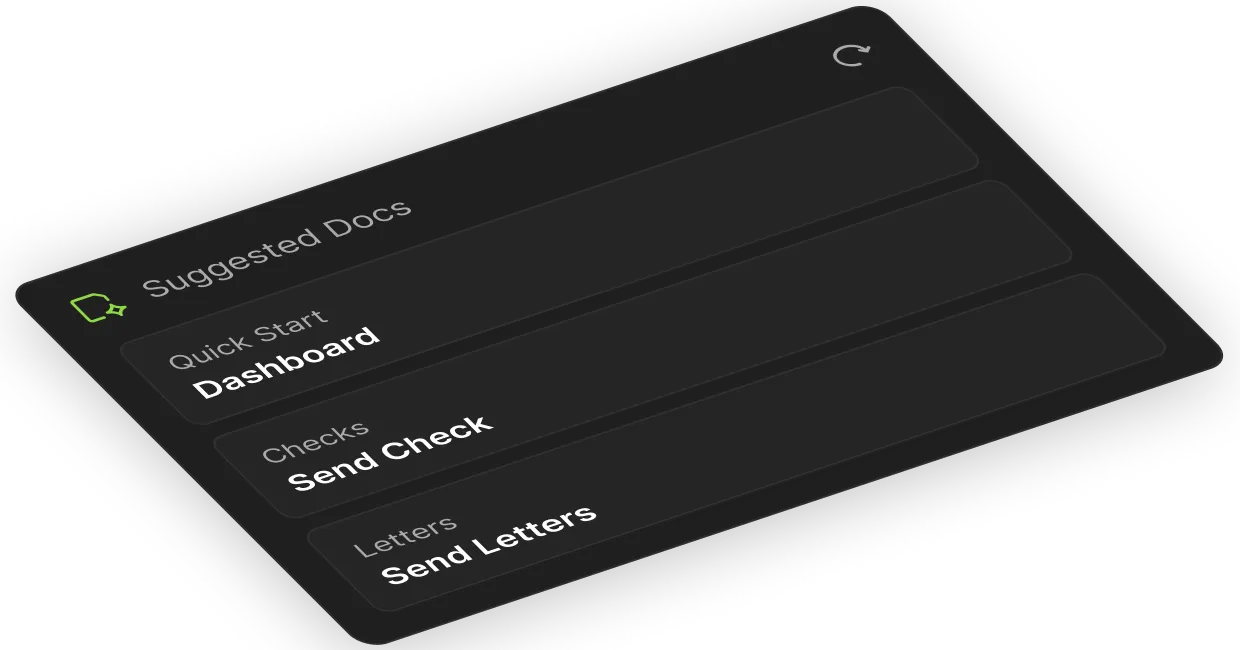Continuous intelligence gathering transforms user interactions into actionable knowledge gaps and ROI metrics
AI analyzes every customer interaction to identify documentation impact, fill content gaps, and quantify value automatically

AI-powered analytics reveal documentation's impact on customer success and operational efficiency. Optimize content for maximum ROI.
Product teams use DocsHound to stay ahead







Continuous intelligence gathering transforms user interactions into actionable knowledge gaps and ROI metrics
AI analyzes every customer interaction to identify documentation impact, fill content gaps, and quantify value automatically

Automatically detect and fill missing information before it impacts customer satisfaction or support costs
Proactively improve documentation coverage by identifying unanswered questions and content gaps

AI-powered suggestions continuously optimize your knowledge base for maximum impact and efficiency
Receive intelligent recommendations to enhance high-traffic pages and streamline user journeys through your documentation

Quantify how documentation directly reduces support tickets and increases customer success rates
Leverage machine learning to continuously improve content based on actual user behavior
Transform complex data into clear, actionable insights that demonstrate documentation's business impact
DocsHound leverages AI to analyze user interactions, support tickets, and content performance. The system correlates documentation usage with reduced support costs and increased customer success rates. Comprehensive dashboards provide clear metrics on knowledge base impact, content gaps, and optimization opportunities.
Key metrics include: support ticket deflection rates, time-to-resolution improvements, user engagement with documentation, content gap identification, and customer satisfaction scores. DocsHound's AI continually refines these metrics to provide the most accurate picture of your documentation's business impact.
DocsHound's AI analyzes user behavior, identifies knowledge gaps, and provides actionable recommendations. It optimizes content structure, suggests improvements for high-traffic pages, and automates the creation of missing documentation. This continuous optimization maximizes the value and efficiency of your knowledge base.
Yes. DocsHound connects with popular support platforms to correlate ticket data with documentation usage. This integration provides a holistic view of how your knowledge base impacts support efficiency and customer satisfaction. The system adapts to your existing workflow while providing deeper insights.
DocsHound provides real-time analytics dashboards and generates weekly AI-powered summary reports. These reports highlight key trends, emerging issues, and opportunities for improvement. Custom reporting schedules can be configured to align with your organization's needs and decision-making cycles.